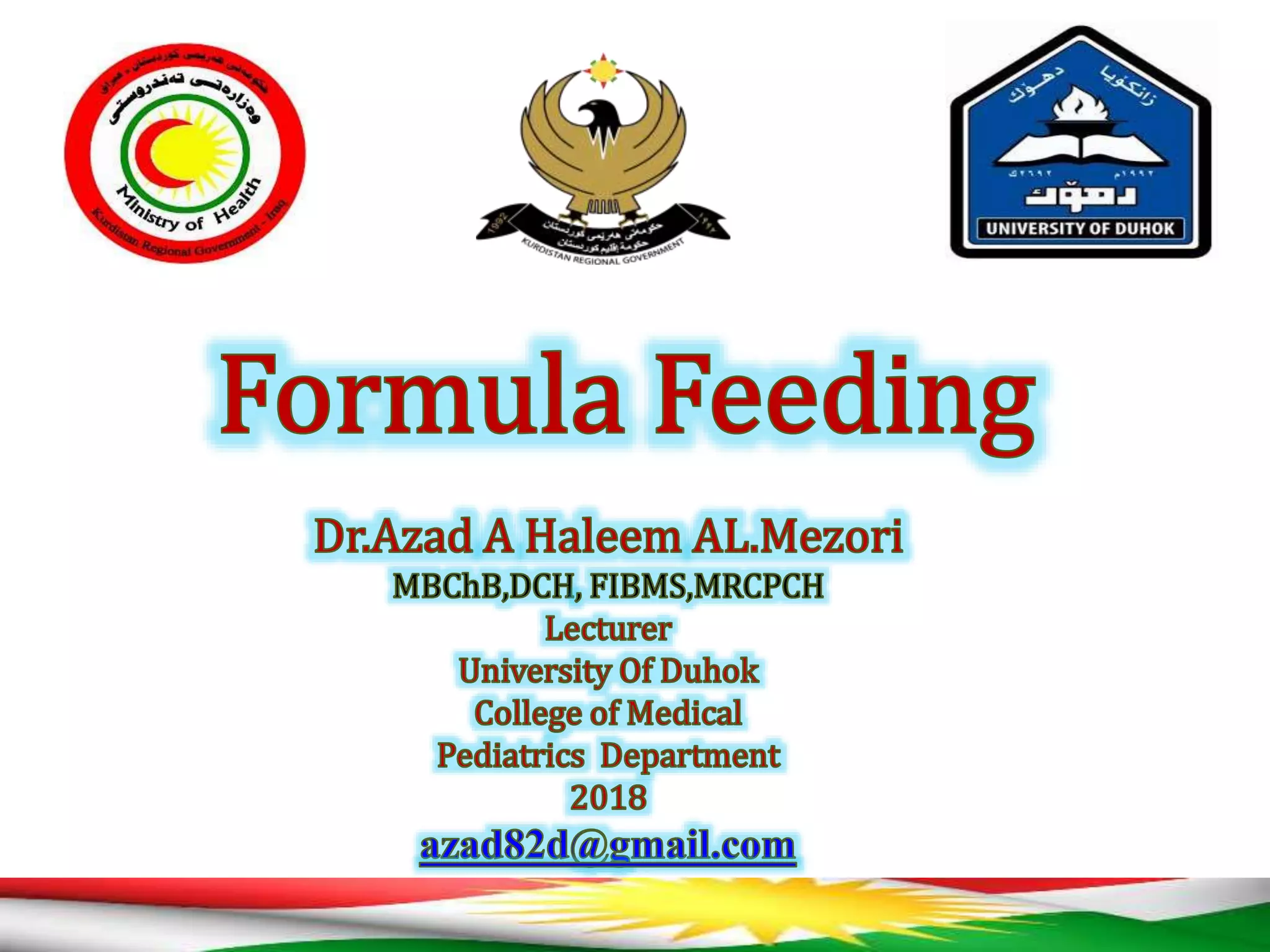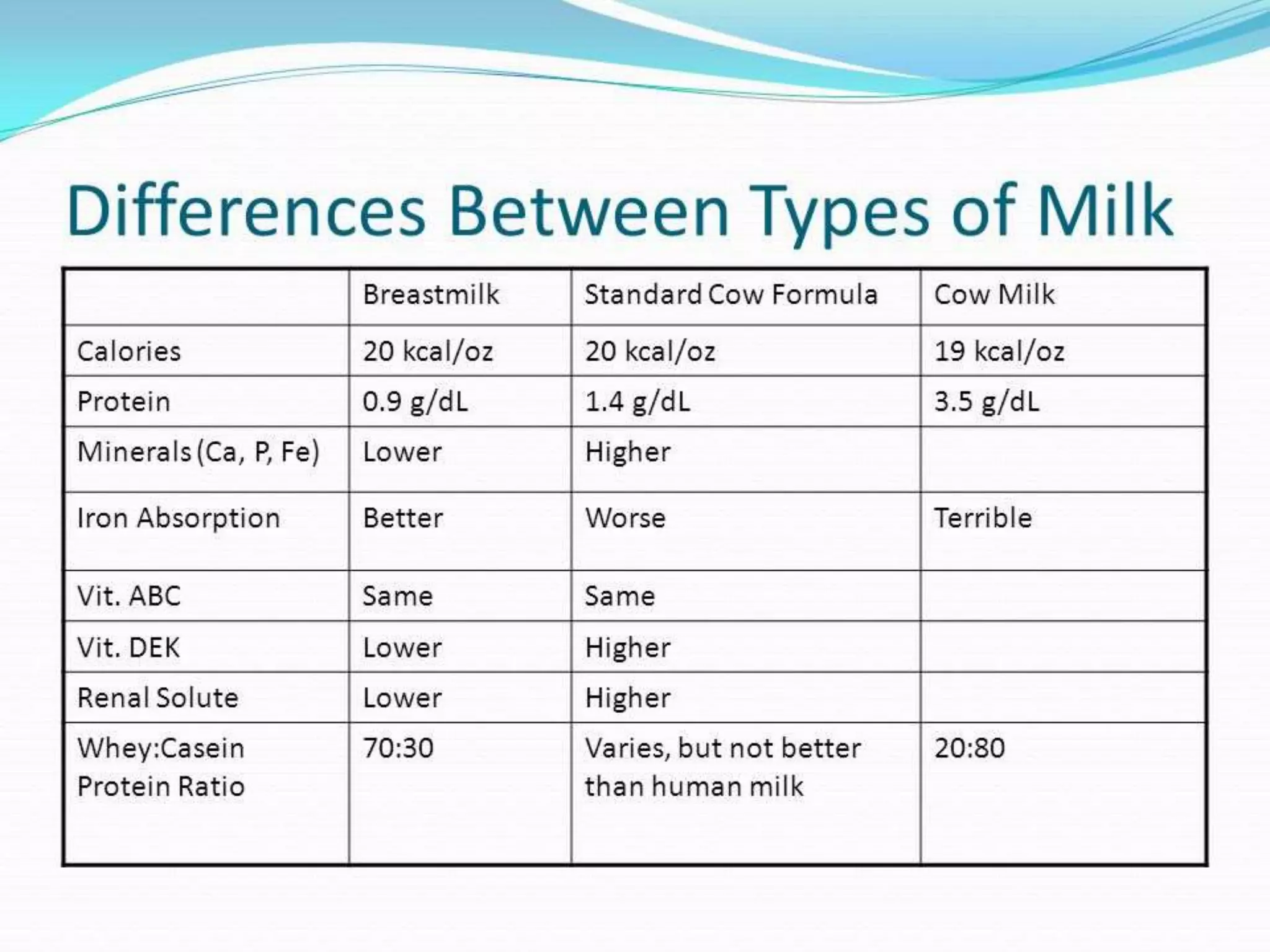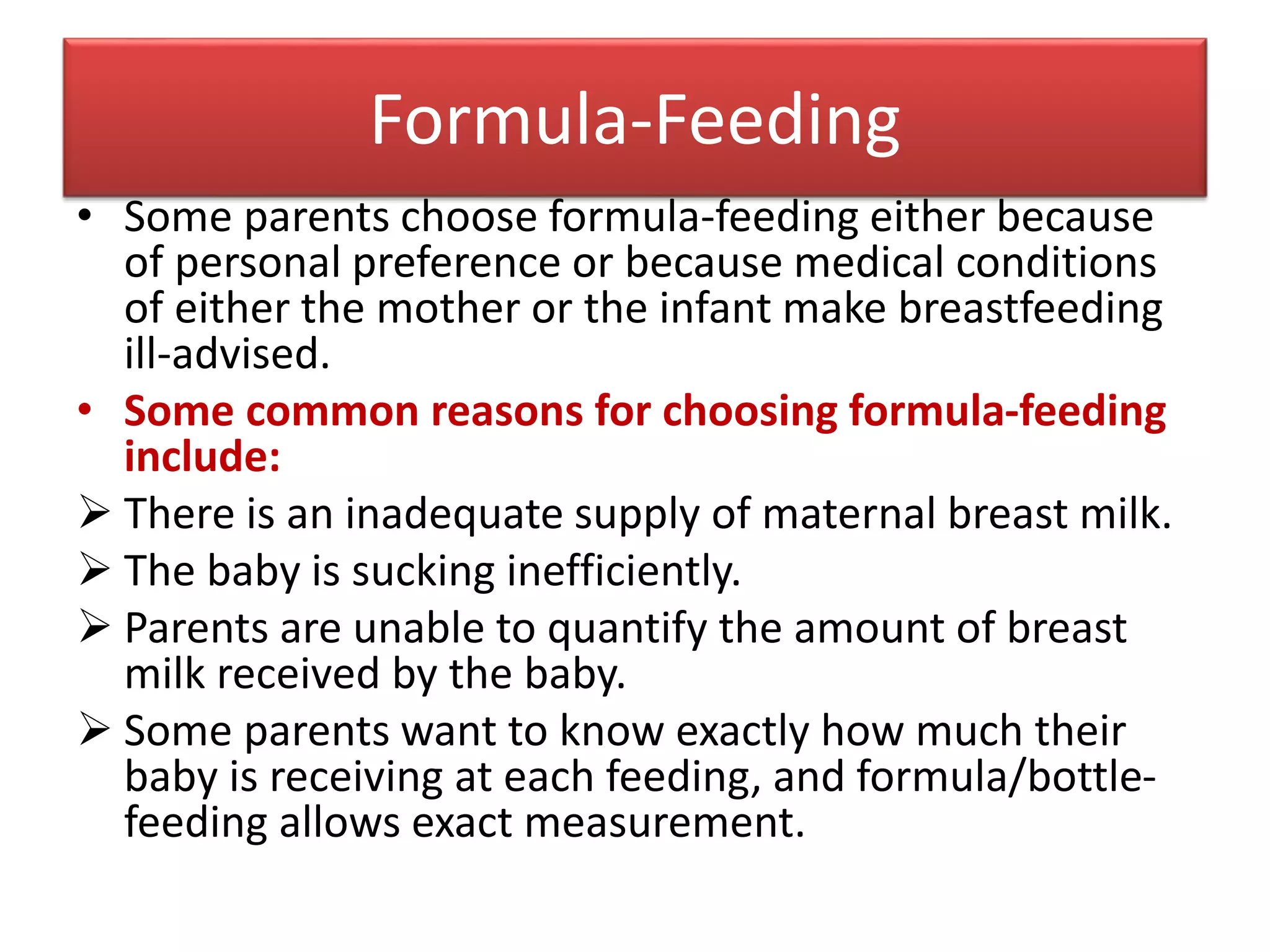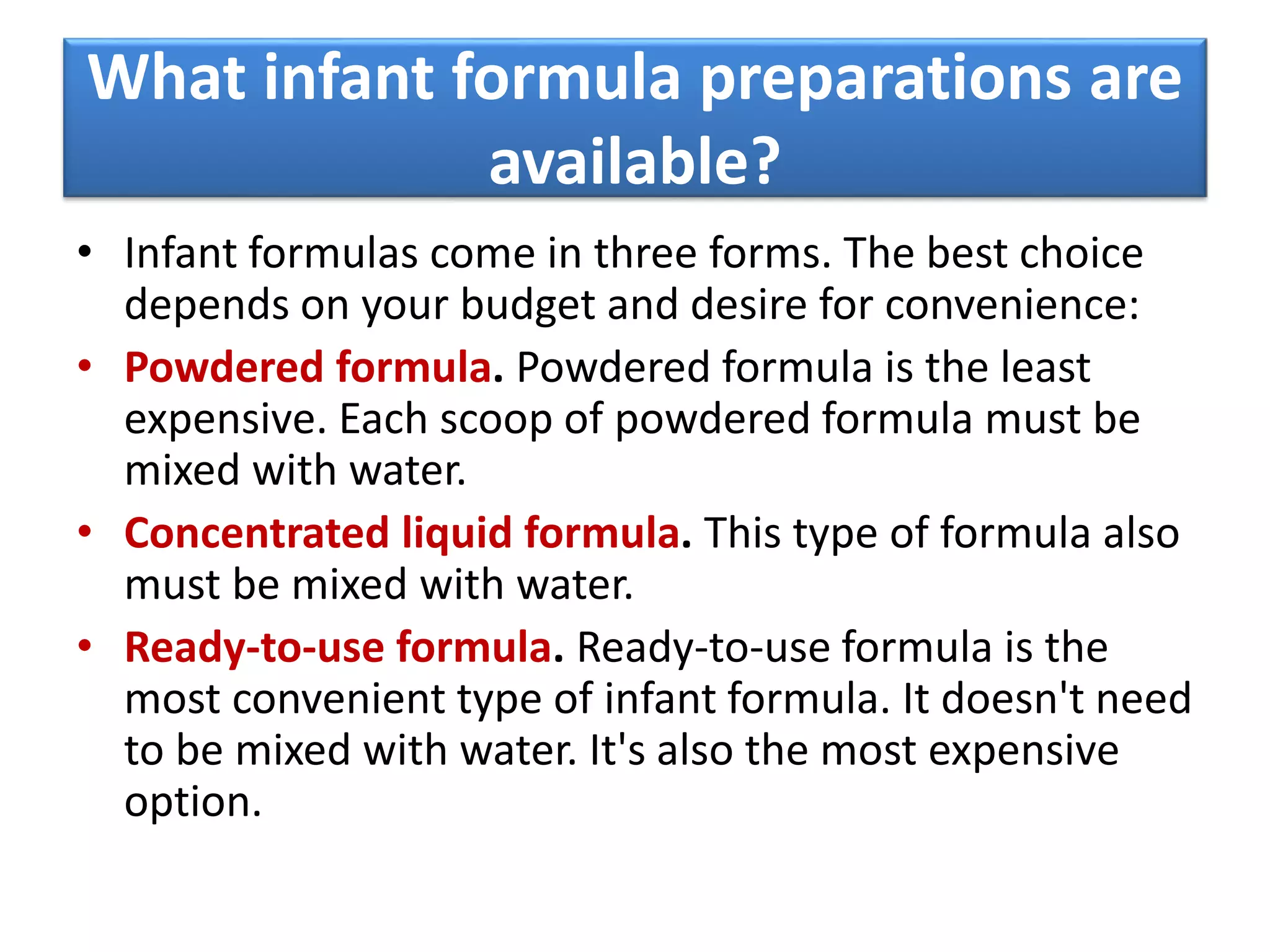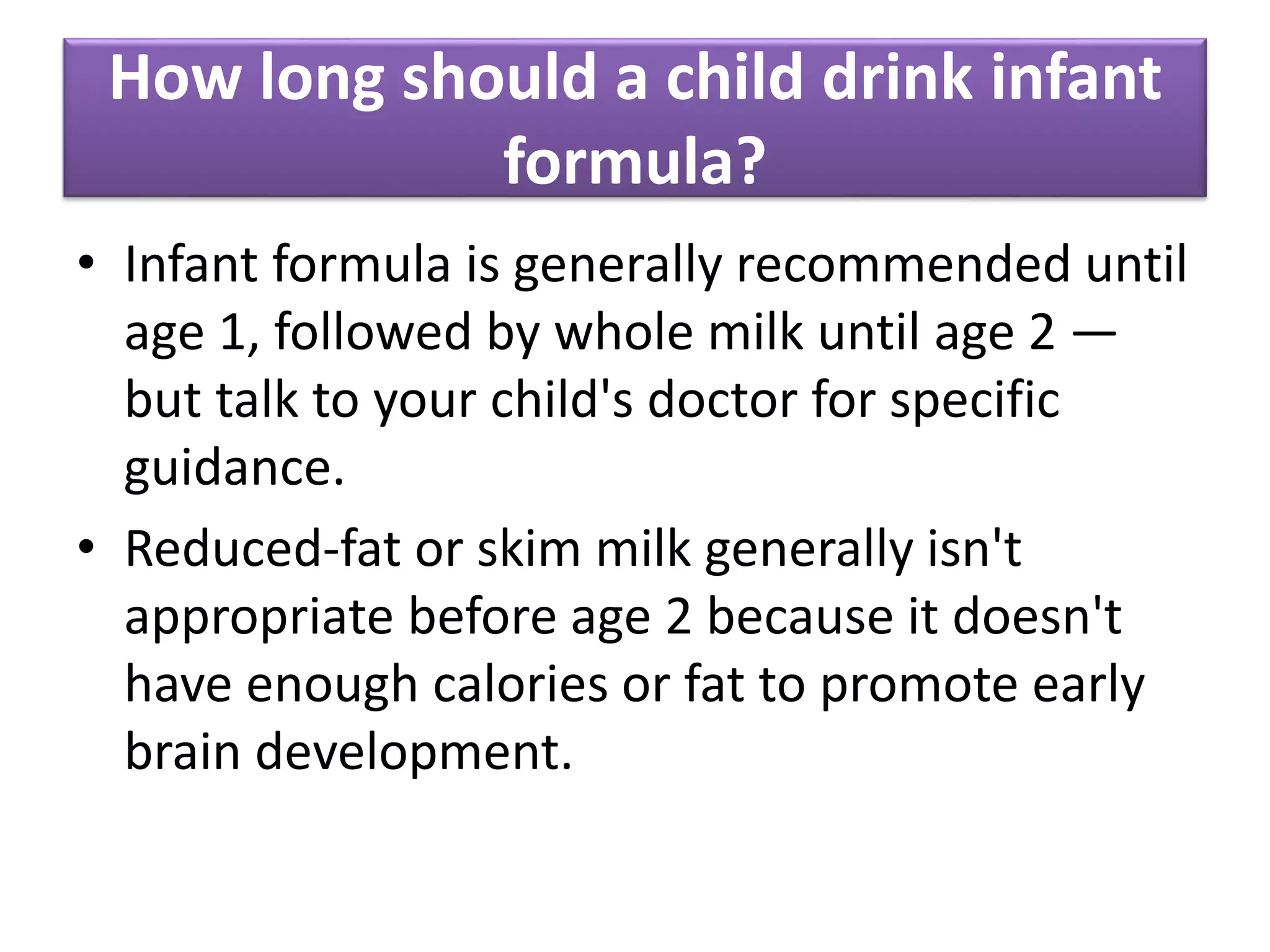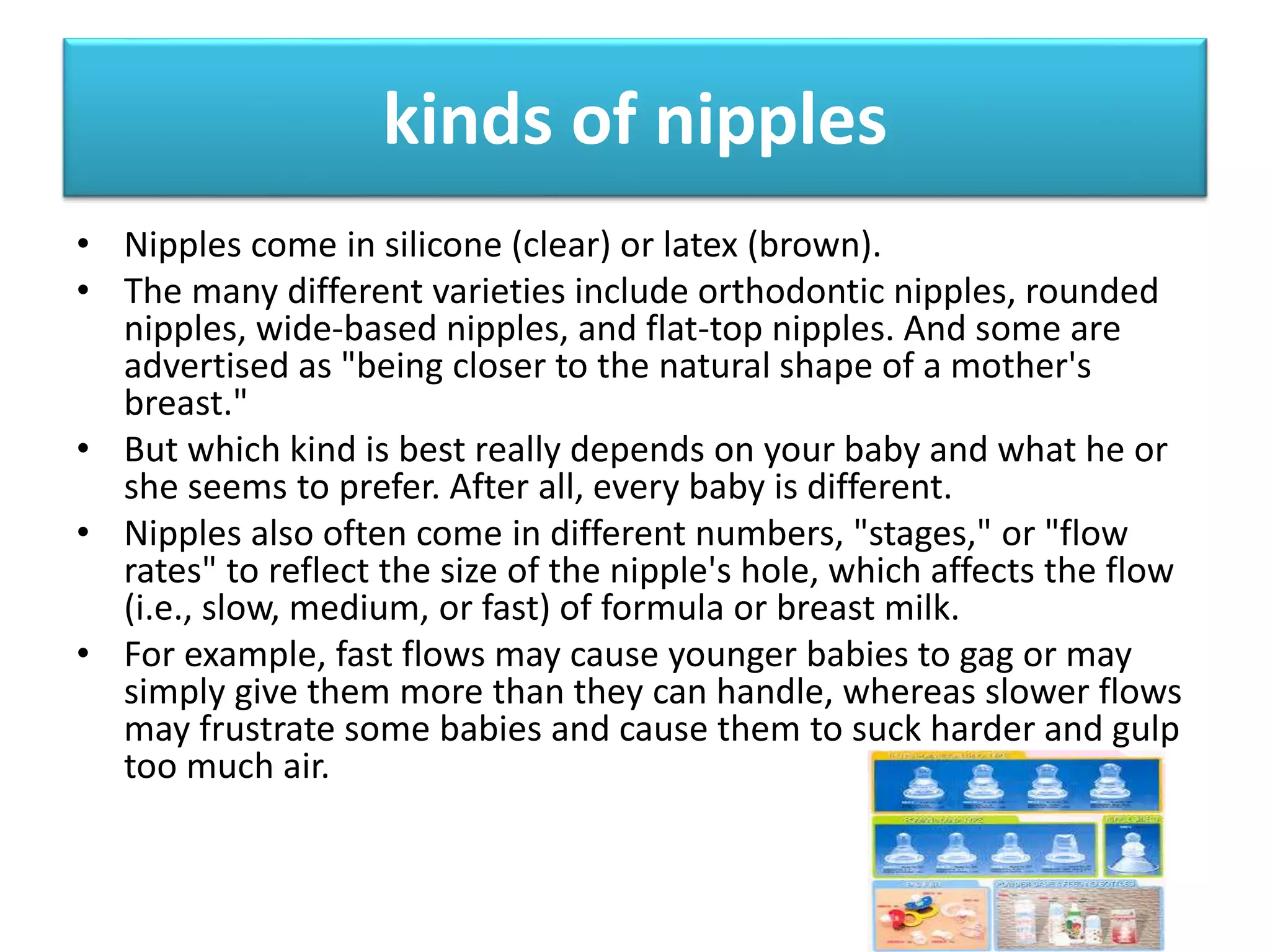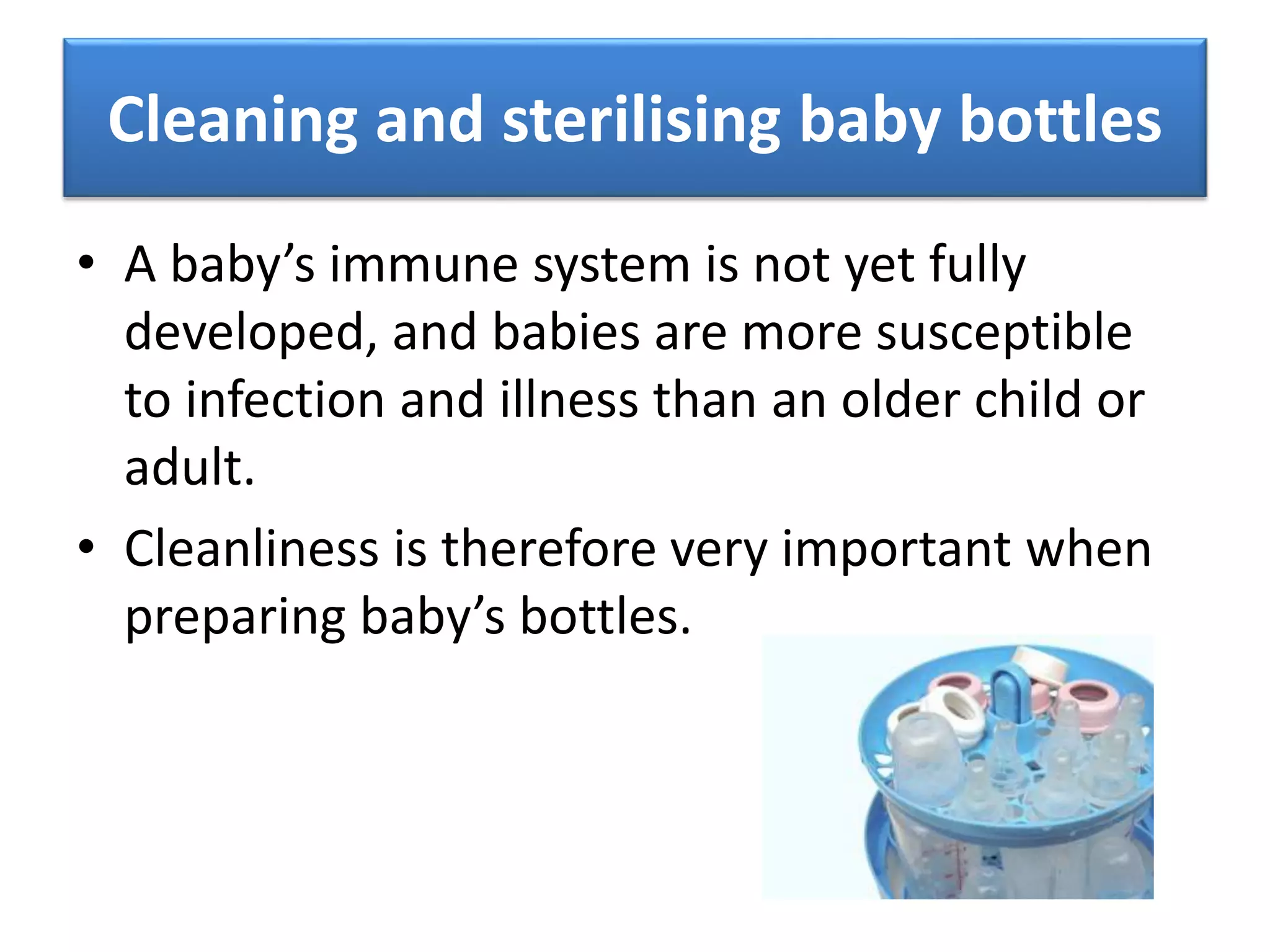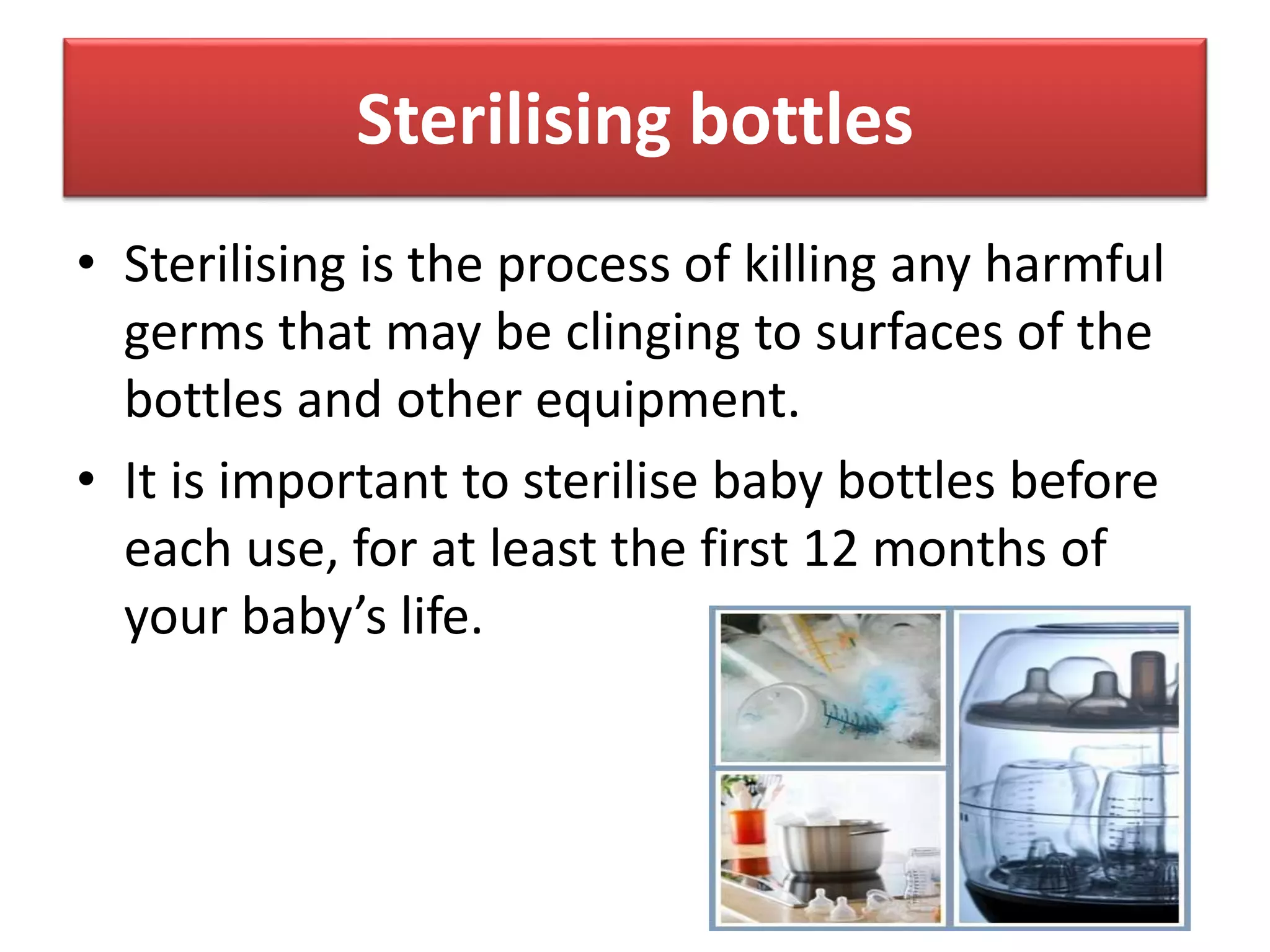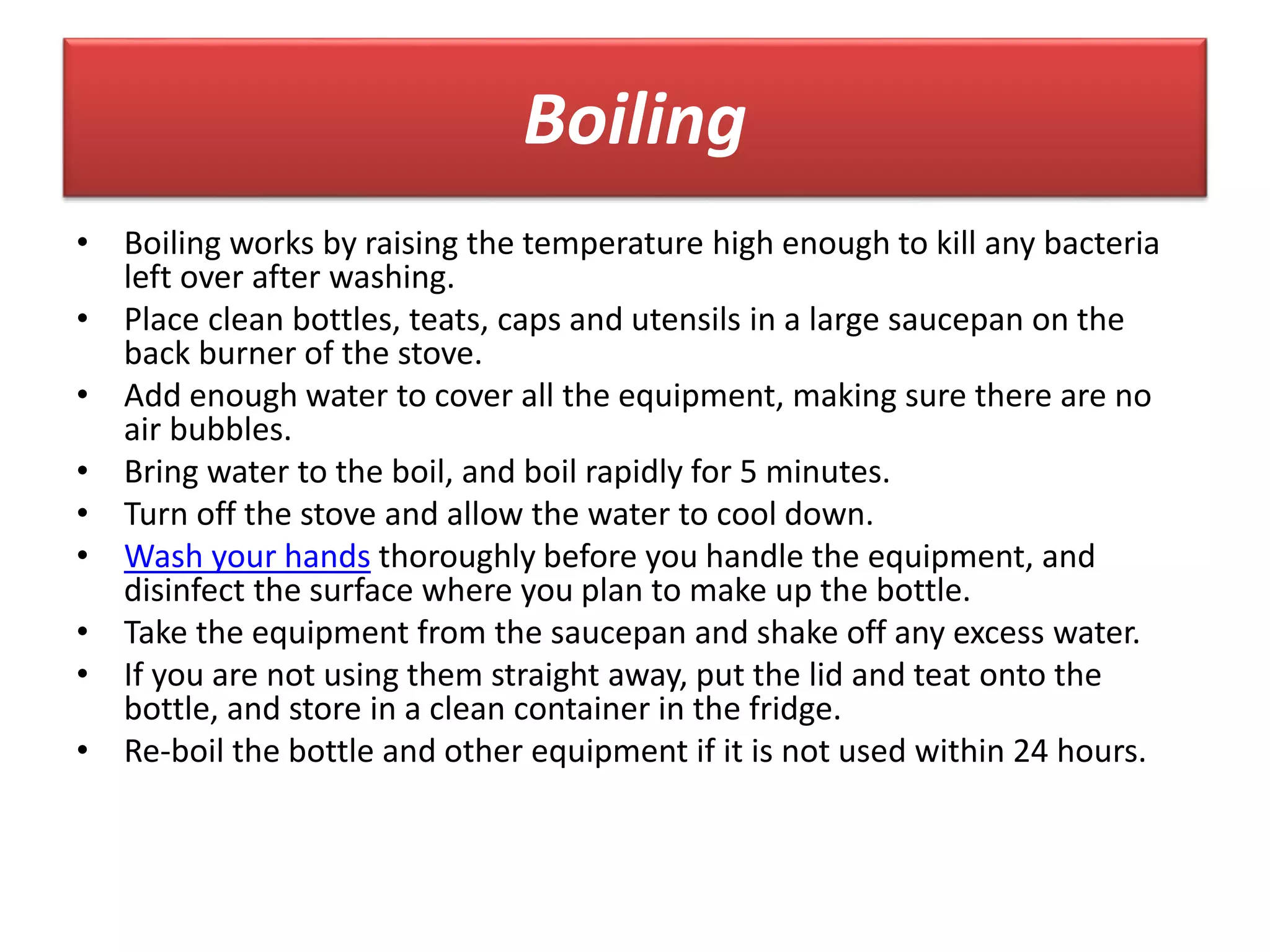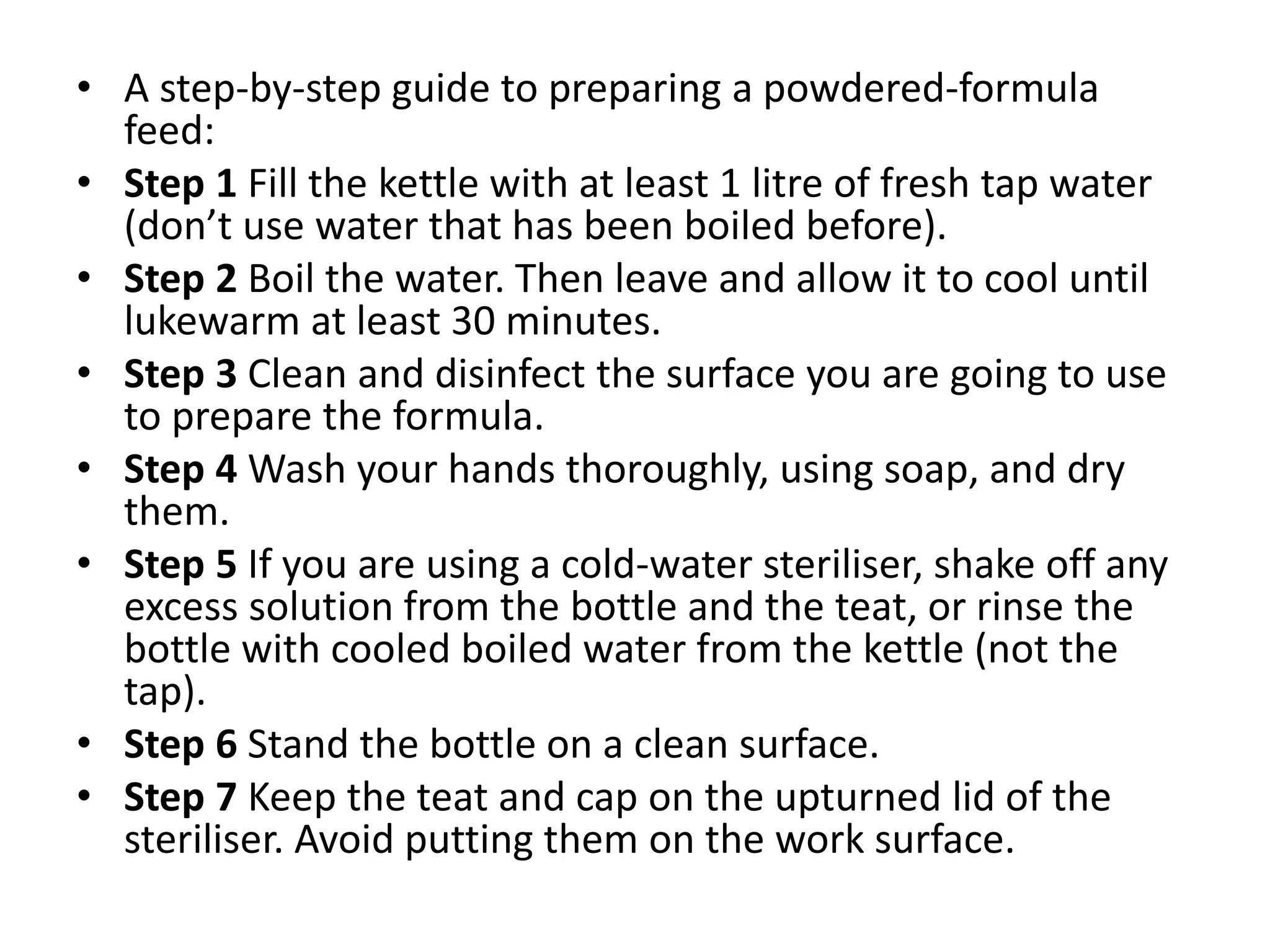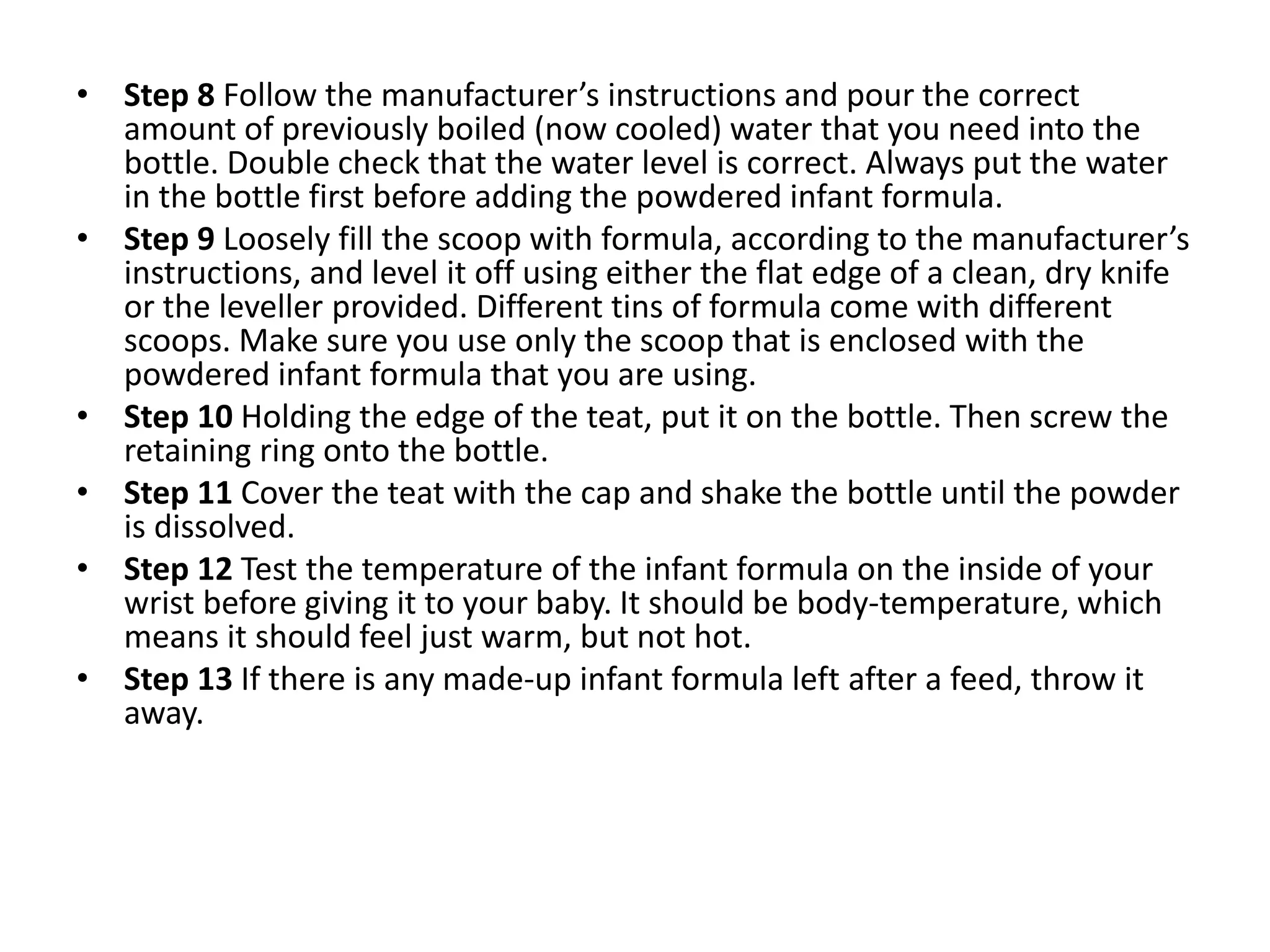The document discusses the options of breastfeeding versus formula feeding for infants. It states that human milk is the preferred feeding for infants, and that pediatricians generally recommend exclusive breastfeeding for the first year when possible. The advantages of breastfeeding include nutritional and immunological benefits for babies. The document also outlines some common reasons parents may choose formula feeding over breastfeeding, such as medical issues or returning to work. It provides guidance on selecting an appropriate formula, how to clean and sterilize bottles, and how to properly prepare and feed a baby with formula.
